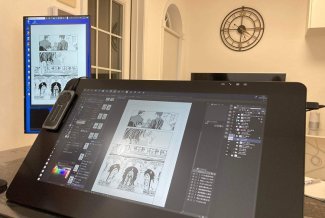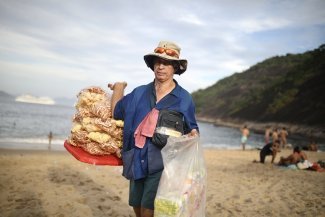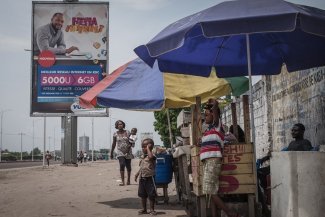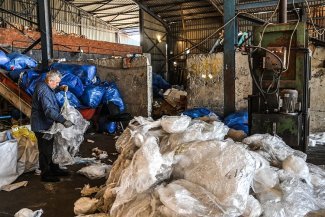Nineteen-year-old Agrippa Machako recounts the day a ‘recruiter’ promised him a job as a hotel chef in Johannesburg, South Africa, over 1000 kilometres away from his hometown of Chipinge in Zimbabwe.
Today, the teenager’s otherwise youthful face and body bears all the scars of the five months he spent toiling as a “gold slave”, 200 metres underground in one of Johannesburg’s derelict mines.
Captured and sold repeatedly by ruthless criminal syndicates from his native Zimbabwe and nearby Lesotho, Agrippa braved smoky diesel generators, faulty rock blasters and malnutrition for the promise of money which, in the end, he was never paid.
Illegal gold excavation and scrapping, worth about six billion rands per year (about US$550 million), is the lifeblood of Johannesburg’s informal economy.
Some 14,000 people – mostly undocumented migrant workers from neighbouring countries such as Zimbabwe, Malawi and Mozambique – work in around 6,000 abandoned mines in South Africa, most of which are located around Johannesburg.
Safely rehabilitating these mines would cost around US$2.7 billion, according to Ross Harvey, a research fellow at the South African Institute of International Affairs.
But despite the environmental risk posed by abandoned mines, which can contaminate local water supplies with heavy metals, it is a price that neither mine owners nor the government are unwilling to pay – particularly given the falling price of gold.
Earlier this year, the South African government’s Council for Geosciences mapped and sealed 130 derelict mines holes while police have been tasked with guarding those which remain.
But the police roadblocks are easily circumnavigated with bribes of cash and bottles of whiskey.
Add to that the massive unemployment across the region, and Johannesburg traditional destination as a place of opportunity, and you have a recipe for massive exploitation.
Zama-zamas
Not all of those working in South Africa’s derelict mines are trafficking victims. Some so-called illegal miners are known as zama-zamas (those who “have a go”) and they work independently.
The working conditions are appalling, least of all because these disused mines are often controlled by violent criminal gangs, but these miners are willing to take the risk: earnings can be as much as much as 1000 rands (US$90) a day.
In addition, there are miners who are paid by syndicates and who work, disguised as employees, in temporarily deserted areas of functioning gold mines.
These miners dig, polish, scrap and crush hard rock laced with gold ore on behalf of powerful criminal syndicates who earn about 400 rands (US$35) for a gram of gold ore on the black market.
But organisations such as the South African NGO Coalition say some 2000 ghost miners work in modern-day slavery every year.
Agrippa’s story begins when he was one of about 30 Zimbabwean youths bundled into a 12-seater Toyota van and taken to South Africa.
At the Beitbridge border crossing which separates the two countries, Agrippa says that corrupt immigration officers receive up to US$50 per head to waiver the vans.
On arrival in Johannesburg, Africa’s famed ‘City of Gold’, Agrippa says the promise of decent work immediately descended into a nightmare.
“At gunpoint, we were handcuffed, stripped of our clothes and inked on our buttocks until someone came and bought me for US$70 – like a slave.”
Next, they were ferried to Springs, a dormitory town 50 kilometres east of Johannesburg nicknamed the ‘Wild Wild East’.
As well as being the location of dozens of illicit mining deaths and murders, Springs is also a notorious crime hub, thanks to illicit mining.
Palo Mpofu, a coordinator for the Springs-based East Rand Against Illegal Mining Stakeholders Forum, told Equal Times: “It has fanned crimes like child prostitution, gun running and violent robbery here on the gold belt. It is a massive headache for our community.”
Unfortunately, rather than tackle the problem, some local police officers are often part of it, claims Agrippa.
“Gold slaves are police ATMs,” he says.
Every trafficked miner must earn his bosses nine grams of gold ore per week to buy back his freedom.
The duration of their captivity can range from two weeks to as many as eight. During this time, the miners receive no payment, only food.
They are promised a percentage of the sale of the gold at the end of the excavation, but most of gangs refuse to pay up citing “food and transport loans”.
With no passports, no way of communicating with the outside world and many unable to speak the local languages or fluent English, most of these forced miners are too scared to attempt to escape.
They have no choice but to try and “earn” their freedom.
Into the mines
Before climbing down a mine shaft each trafficked miner is given a belt of explosives, a torch and a diesel generator for rock drilling.
They have little or no safety equipment or protective gear.
They then walk up to five ‘levels’ down (each level is approximately 40 metres) into dark mine dumps where the old, underground tunnels are splitting, the air is warm and musty, and huge rock boulders teeter precariously.
“You crawl for 300 metres with a 35kg generator pinned on your back,” says Agrippa.
“If you walk upright, then rocks will slice your shoulder bones.”
The captured men work 19 hour days but are only fed twice a day, surviving on meagre rations of bread, boiled cabbage, porridge and mango juice. They sleep underground on flat rocks until the start of their next shift.
Language frictions between the captors and their captives, who speak a variety of different languages, are inevitable.
For any misunderstanding, punishments are swift and severe. “Failure to understand a simple word can get you sodomised,” says Agrippa. “You become a ‘wife’”.
Upon reaching the mine’s ground depth, the miners crank up the generator to drill the hard rocks which are rich in residual gold ore. It is a two hour drill for each miner – non-stop.
“The generators are very smoky,” says Agrippa who contracted tuberculosis during his stint in the mines. “Many faint from the fumes.”
For this, too, the punishment is also brutal. “You’re soaked in cold, acidic mine water if you faint. The pain quickly revives you.”
Once holes are sunk in the rocks, the miners insert ‘sausages’ – cheap, illegal Chinese explosives, often laced with pesticides and other chemicals to increase their potency – into the openings to spilt the rocks.
After wiring the explosive dynamite around a drilled rock, everyone has to move 20 metres away from the site in two minutes.
A gigantic blast goes off, shaking the rusty mines to their core, and splitting rocks into dust and tiny stones.
“It’s a deadly operation. After the blast two people are dispatched to examine the site,” says Agrippa.
On his turn, Agrippa was not so lucky. A short fused wiring went off, throwing him just metres from the mouth of the blast.
His ear was badly damaged but Agrippa is one of the lucky ones. Many labourers don’t make it out of the mines alive.
For example, in March 2014, the international press descended on a mine dump in Roodepoort , near Johannesburg, as up to 23 miners from Zimbabwe died in a disused mine.
After explosives reduce rock boulders to stone and dust, the real toil begins for the miners.
Each person is allocated a steel tin and iron rod to hammer down small stones until they become dust or ‘flour’.
“You crush the stones for five hours every day,” he says. It is backbreaking work, made even harder by the hunger and violence.
Next, swinging steel tins called pendukas are stuffed with rock dust, water, liquid mercury and salt, before being positioned on greased iron axles which are turned by workers for two hours until the rock dust starts to solidify into gold.
The long climb out
After a minimum of a fortnight underground, the long, hellish ascent begins.
With pouches of gold tied around their necks, the armed criminal gangs march their captives out of the mines.
It can take up to six hours to make it back overground, climbing through passages where rocks are sprayed with blood – a testament to executions and fatal rock falls.
Occasionally, rival gangs attempt fresh kidnappings or daring robberies.
Agrippa says he was resold numerous times after falling into the hands of new abductors from rival criminal gang. He spent a total of six months underground.
The South African government has claimed it is trying to tackle the problem.
The mining ministry has previously announced plans to build low-cost housing over abandoned mines in an attempt to tackle both the country’s housing shortage and to put a stop to illegal mining.
Following the shooting of 11 men in a mine dump in Benoni, east of Johanesburg in June, the Minster for Mining, Ngoako Ramatlhodi, issued the following statement:
“Through the Illegal Mining Stakeholder Forums established, the Department will continue implementing measures to ultimately eradicate these illicit activities” – measure which include the sealing off access holes and working with the police to arrest criminals.
Just who is considered a criminal, the government didn’t say.
But as George Nyanda, an economist for the Zimbabwe Federation of Trade Unions (ZFTU), puts it the real crime here is “vicious poverty”.
“The increasing number of deaths of migrant workers in South Africa’s old mine shafts won’t stop until poverty levels in countries like Zimbabwe drop. For desperate miners, with no other employment opportunities, it is a do or die situation.”









